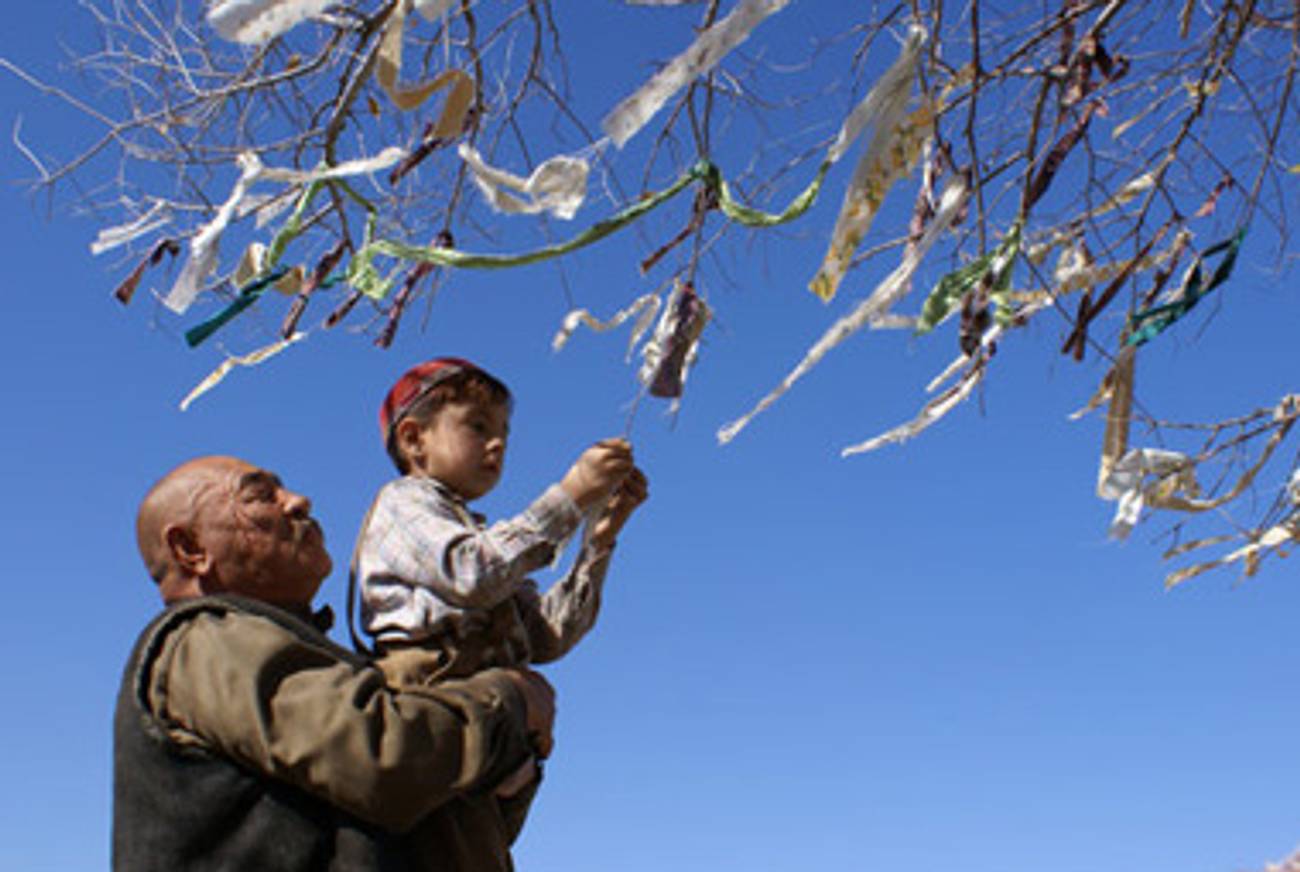No Borat Here
A Jewish boy out of his element in Soviet Kazakhstan




The Gift to Stalin is one of those beautifully understated, heartbreaking movies whose images you can’t shake from your mind. The film, which opened this weekend in New York City, follows the story of Sashka, a young Jewish boy from Stalinist Moscow whose life is saved when a railroad worker finds him among dead bodies (including his grandfather’s) on a train that stops in a small village in Kazakhstan. (The viewer here must deduce that the train has come from Russia and is heading eastward, carrying those who are politically and ethnically undesirable). Kazym, the quietly bold railroad worker with no connection to the small child, takes the boy home and nurses him back to health. The young Sashka—nicknamed “Sabyr,” the humble, by the local shaman—becomes part of the remote village’s mix of displaced and native inhabitants, all of whom are surviving together in this isolated undercurrent of Soviet society.
Sparse, simple (English-subtitled) dialogue matches the barren steppe in which this Kazakhistan-made film takes place. As is perhaps common with foreign language films in which English translations appear on screen, the visual aspect of the film has a heightened impact. Even so, scenes of children playing in the village’s desolate expanse or a close-up of “Grandpa Kasym” and his leathery, work-worn face are hauntingly powerful images that carry the film in a way dialogue alone simply couldn’t. It seems appropriate, then, that the verbal exchanges between characters seem less important than the physical interactions—among young children of different ethnic backgrounds, among Sashka and his newfound caretakers, and among the villagers as they work to take care of each other.
One of the most heart-wrenchingly hopeful scenes—the embodiment of innocence amidst a depressing physical and ideological landscape—is almost comically simple in its depiction and dialogue. Kasym is carrying Sashka on his back as he walks along the railroad, stopping to heave aside a boulder that has fallen onto the tracks. Sashka marvels at his guardian’s strength, and they continue on, singing and casually discussing God. It doesn’t hurt the adorability factor that Sashka is an unbelievably cute child and old Kaysm is lovably protective over his new charge.
While the scenes are evocative and tell a compelling story of survival and caretaking, the film ultimately offers little explanation of the circumstances around the small village and its inhabitants, and relies on the viewer’s understanding of the film’s historical and cultural context. The viewer sees the tyranny of the Stalin regime as it impacts the remote villagers, who at any moment are subject to harassment—verbal abuse and sexual assault—though we are never told specifically how most of the villagers have come to be there, and how long they have been there. The supporting characters appear without much introduction or background, as if we are supposed to know them only in their uprooted existence in the village. In this sense, however, they also embody the deliberately lost mood of the film itself.
Stephanie Butnick is chief strategy officer of Tablet Magazine, co-founder of Tablet Studios, and a host of the Unorthodox podcast.